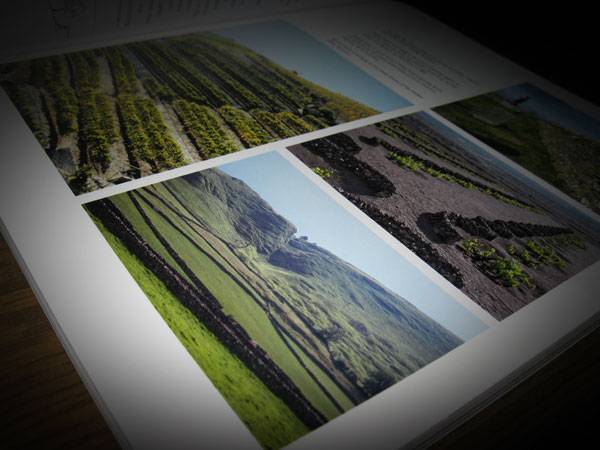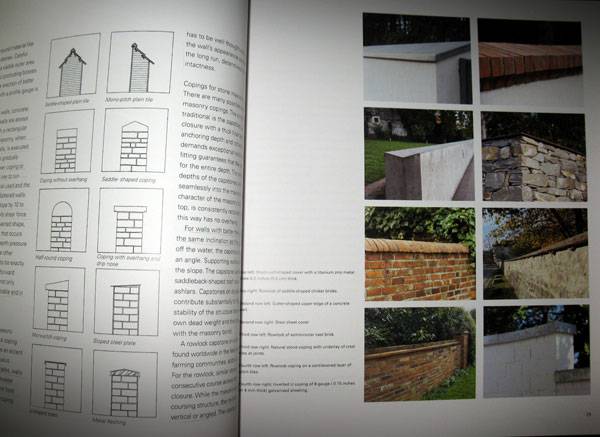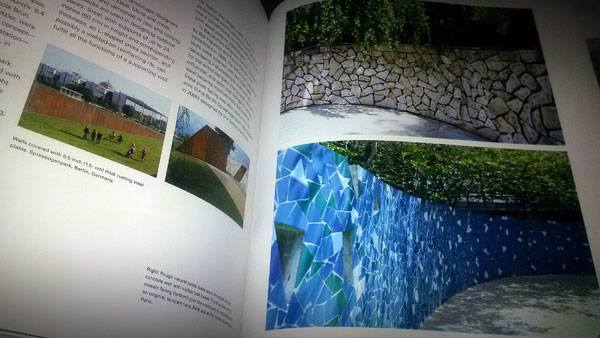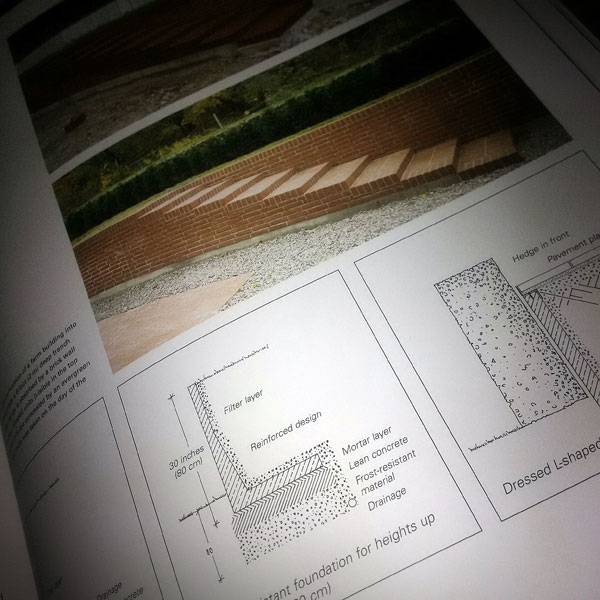A book review of the Walls: Elements of Garden and Landscape Architecture by Günter Mader and Elke Zimmerman. Everyone knows Pink Floyd’s hit song “Another Brick in the Wall”, and perhaps every person finds something true in the lyrics. Who wants to be just another brick in the wall? Don’t we all try to seek the different, the undiscovered, the unheard of and the untold? We chase singularity, individuality, and differentiation in our everyday lives. Artists and architects strive to make names for themselves, to develop their recognizable signatures, and, yes, to stand out among the other “bricks”.

Front cover of Walls: Elements of Garden and Landscape Architecture. Photo credit: Velislava Valcheva
Walls: Elements of Garden and Landscape Architecture
The Engrossing World of Walls
“Stones always tell us long stories. They are natural formations that reflect the growth and decay that occurs over the course of time. Man senses something unique in stone that helps him express his thoughts. In this way, we find our connection to the tried and true and our unison with nature.” With this quote from world-famous architect Werner Blaser, the book immerses you in the fascination of walls right from the very first sentence.

Inside Walls: Elements of Garden and Landscape Architecture. Photo credit: Velislava Valcheva

Inside Walls: Elements of Garden and Landscape Architecture. Photo credit: Velislava Valcheva
The Cultural and Building History of Walls
The first section of the book goes into the cultural history of wall construction. While illustrating examples of cultural heritage such as fortified national borders — including The Great Wall of China, the walls of the Roman Empire, and The Berlin Wall — the book studies how cultural and building history go hand in hand.

Inside Walls: Elements of Garden and Landscape Architecture. Photo credit: Velislava Valcheva
A Trip Back to 5,000 B.C.
The reader is taken back in time to 5,000 B.C. to investigate how town walls defined spaces with their own regulations and helped society live in peace. The history of walls traces out the development of waterside, garden, and terraced walls until it reaches the curious, bowl-like plant areas called arenados, which were used for earth cultivating in the first part of 20th century.

Inside Walls: Elements of Garden and Landscape Architecture. Photo credit: Velislava Valcheva

Inside Walls: Elements of Garden and Landscape Architecture. Photo credit: Velislava Valcheva
Design Fundamentals of Walls
The next section of the book is devoted to the most considerable part of designing walls – the structural fundamentals. What are the differences between freestanding and retaining walls? What technical details should be taken into account for the foundation, the base, the masonry, and the coping of a wall? The easily comprehensible text, professional sketches, and images reveal the answers to all those questions. Furthermore, a special feature is dedicated to planning basics, from which a designer can learn the best way to design a wall – considering the proper dimensions, materials, and, of course, legal concerns.
Wall Variety
Coming closer to the most tempting part of the book for designers – the one looking at the diverse types of walls – readers are gradually faced with the unbounded but steady design potential held by walls. Beginning with the favorite of garden and landscape designers — stone masonry walls — the authors disclose stone’s strengths and weaknesses while displaying mind-blowing, world-class projects of the highest craftsmanship. If you are eager to sneak a peek into the Edwardian epoch (1901-1910) and see how walls were designed at that time, this section of the book is for you. You can pick up the book here!

Inside Walls: Elements of Garden and Landscape Architecture. Photo credit: Velislava Valcheva

Inside Walls: Elements of Garden and Landscape Architecture. Photo credit: Velislava Valcheva

Inside Walls: Elements of Garden and Landscape Architecture. Photo credit: Velislava Valcheva
Why Should You Read This Book?
As the authors say: “This book presents numerous design possibilities for walls and open spaces. It is organized by type of construction, material, and method of execution. You will find examples from traditional dry walls typical in some regions and cultures to actual works of land art …” With its absorbing content, this book is suitable for inquisitive designers, students, and people seeking perfection and the vital connection between the time-honored and the new, into and beyond the world of walls.

Inside Walls: Elements of Garden and Landscape Architecture. Photo credit: Velislava Valcheva
- Landscape and Urban Design for Health and Well-Being
- Digital Drawing for Landscape Architecture
- 10 Books to Read in Your Fourth Year of Landscape Architecture
Pick up your copy of Walls: Elements of Garden and Landscape Architecture today!
Review by Velislava Valcheva Return to Homepage
Published in Blog









